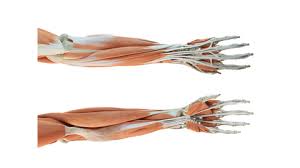

Injuries Resulting from Playing Music: Prevention and Treatment Methods 2021-04-27

Music, a universal language with the ability to connect people and evoke emotions, has captivated hearts and minds throughout history. Musicians dedicate countless hours to perfecting their craft, creating beautiful melodies that resonate globally. However, achieving musical excellence can come at a cost, with the risk of injuries stemming from playing instruments. In this article, we delve into common musician injuries and provide suggestions for prevention and treatment.
Understanding Musician Injuries
Both amateur and professional musicians can suffer physical injuries due to repetitive motions, poor posture, and muscle/joint overuse. These injuries can impact individuals of all ages and skill levels and, if left unaddressed, may lead to chronic pain, discomfort, and severe harm. Some prevalent musician injuries encompass:
Tendonitis: Characterized by inflamed tendons due to repetitive movements, tendonitis is prevalent among players of instruments such as the guitar, piano, oud, and stringed instruments. Tendons link muscles to bones and relieve muscle pressure. Overexertion can damage tendons, leading to tendonitis. Symptoms include weakness, pain, reduced motion range, and conditions like trigger finger syndrome.
Carpal Tunnel Syndrome: Musicians who play instruments like the piano, keyboard, and string instruments might experience this condition, involving compression of the median nerve within the carpal tunnel. Symptoms consist of numbness, tingling, reduced
hand movement, and weakness.

Disc Herniation: Common among guitar, clarinet, and string instrument players, disc herniation is caused by the displacement or compression
of intervertebral discs. This can result in pain and issues in the lower or upper back, as well as the neck.
Hearing Loss: Musicians exposed to high instrument volumes are at risk of hearing disorders. Playing in noisy environments can contribute to tension and hearing loss, impacting musicians across genres and instruments.
Respiratory Problems: Wind instrument players encounter respiratory issues due to the uniqe requirments of their instruments. Controlled exhalations during play can affect the respiratory system over time, causing conditions like asthma, bronchitis, and lung obstruction.
Psychological Injuries: In extreme cases, musical activities can lead to psychological issues. Injuries in critical areas like the hands might cause
musicians to stop playing, affecting self-confidence and inducing stress.
Strategies for Prevention and Treatment
Correct Technique and Ergonomics: Proper playing techniques and ergonomic posture considerably lower injury risk. Musicians should work
with experienced teachers to ensure proper body alignment, particularly in fingers, wrists, spine, and neck.
Warm-up and Stretching: Similar to athletes, musicians should warm up before performing. Stretching and gentle warm-ups prepare muscles
and joints, reducing the likelihood of strain and injuries.
Regular Breaks: Taking frequent breaks during practice and performance prevents overuse injuries. Brief pauses allow muscles to recover, easing strain on tendons and joints.
Instrument Maintenance: Maintaining and setting up instruments aids in better play. Well-kept instruments require less force, reducing
the risk of strain.Sometimes, an instrument may not be suitable for a person's physique in terms of overall dimensions or the size of some parts.
Protecting Hearing: Musicians should prioritize their hearing, especially during rehearsals and extended performances. Specialized earplugs designed for musicians can help prevent hearing loss.
Cross Training and excercise : exercise to improve strength, flexibility, and posture can enhance resilience against injuries. Activities like yoga, Pilates, strength training, and massage can be beneficial.
:Mental Exercises and Meditation
Regular practice and meditation enhance musicians' concentration, creativity, mind-body harmony, patience, and endurance. Meditation serves as a potent tool for managing these challenges, reducing muscle tension, and enriching their musical journey.
Incorporating meditation into a musician's daily routine isn't a necessity. Even brief daily sessions can accumulate considerable benefits over time. Whether through simple mindfulness exercises, introspection, visualization techniques, or guided meditations, musicians can harness meditation's transformative potential to elevate their musical prowess and overall quality of life.
:Seeking Professional Help and Guidance
When a musician experiences persistent pain or discomfort, seeking prompt medical attention is crucial. Musicians can consult expert physicians, physiotherapists, and specialized therapists who comprehend the unique demands faced by musicians. Furthermore, tailored techniques have been designed and recommended specifically for musicians. Prominent among these are the Alexander Technique, Body Mapping, and Musemusle.
Conclusion
Mastering various musical instruments is an art deeply intertwined with musicians' physical and mental well-being. While it beautifully showcases the realms of music and art, it can also lead to physical and psychological challenges. Therefore, it's imperative for musicians to prioritize accurate techniques, heedful advice, and the maintenance of their physical and mental health. Always bear in mind that prevention outweighs the need for treatment.
